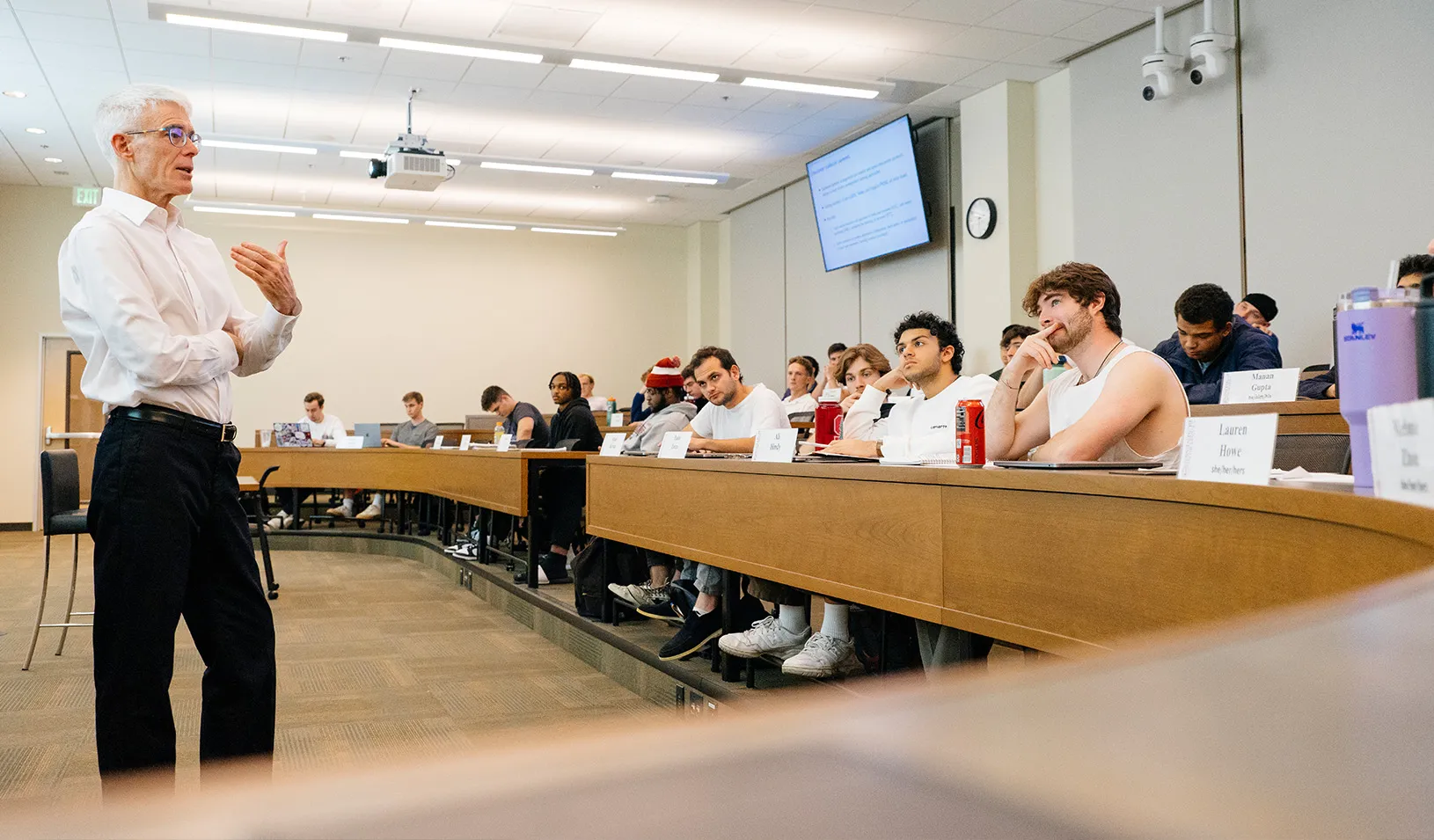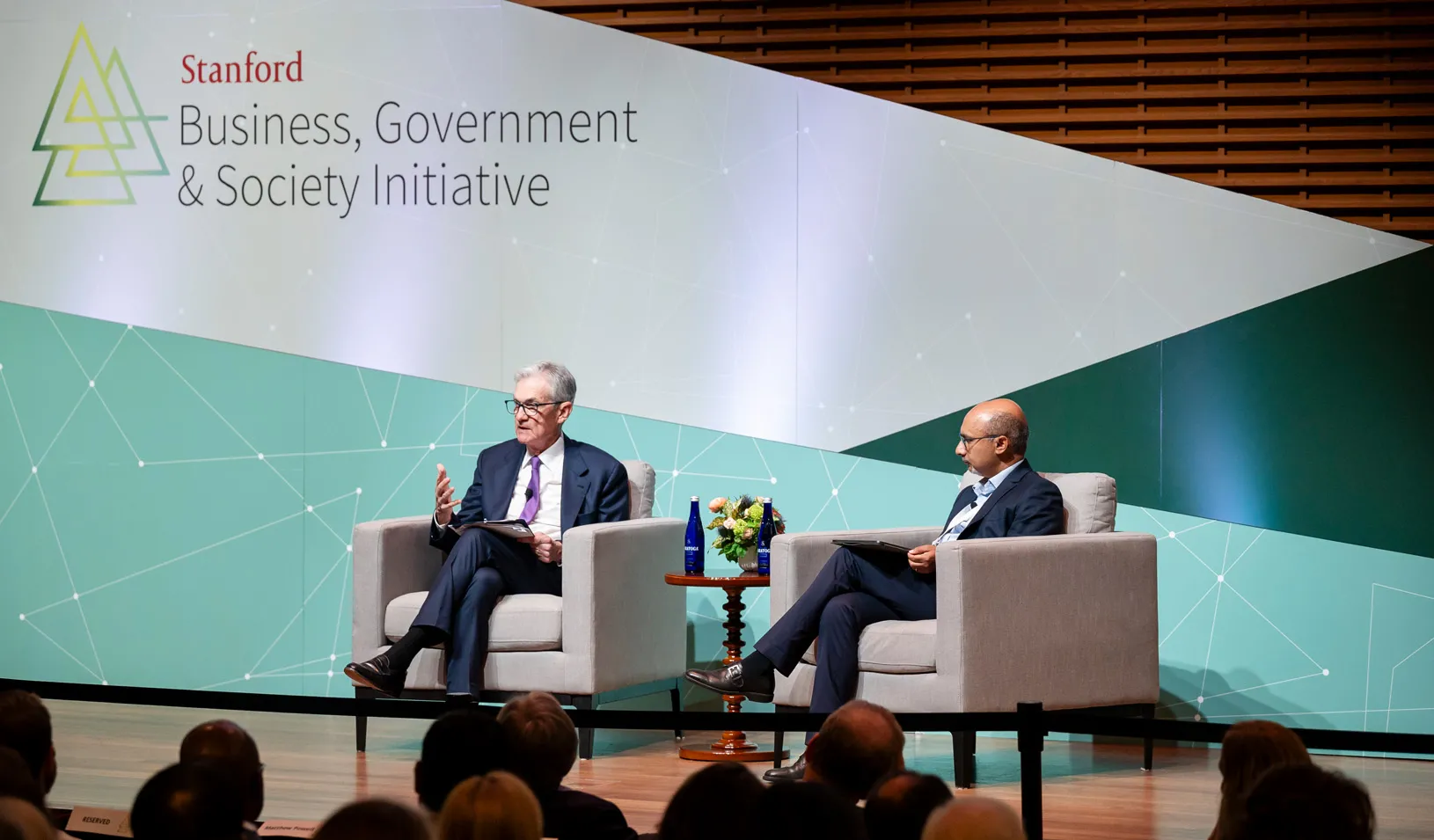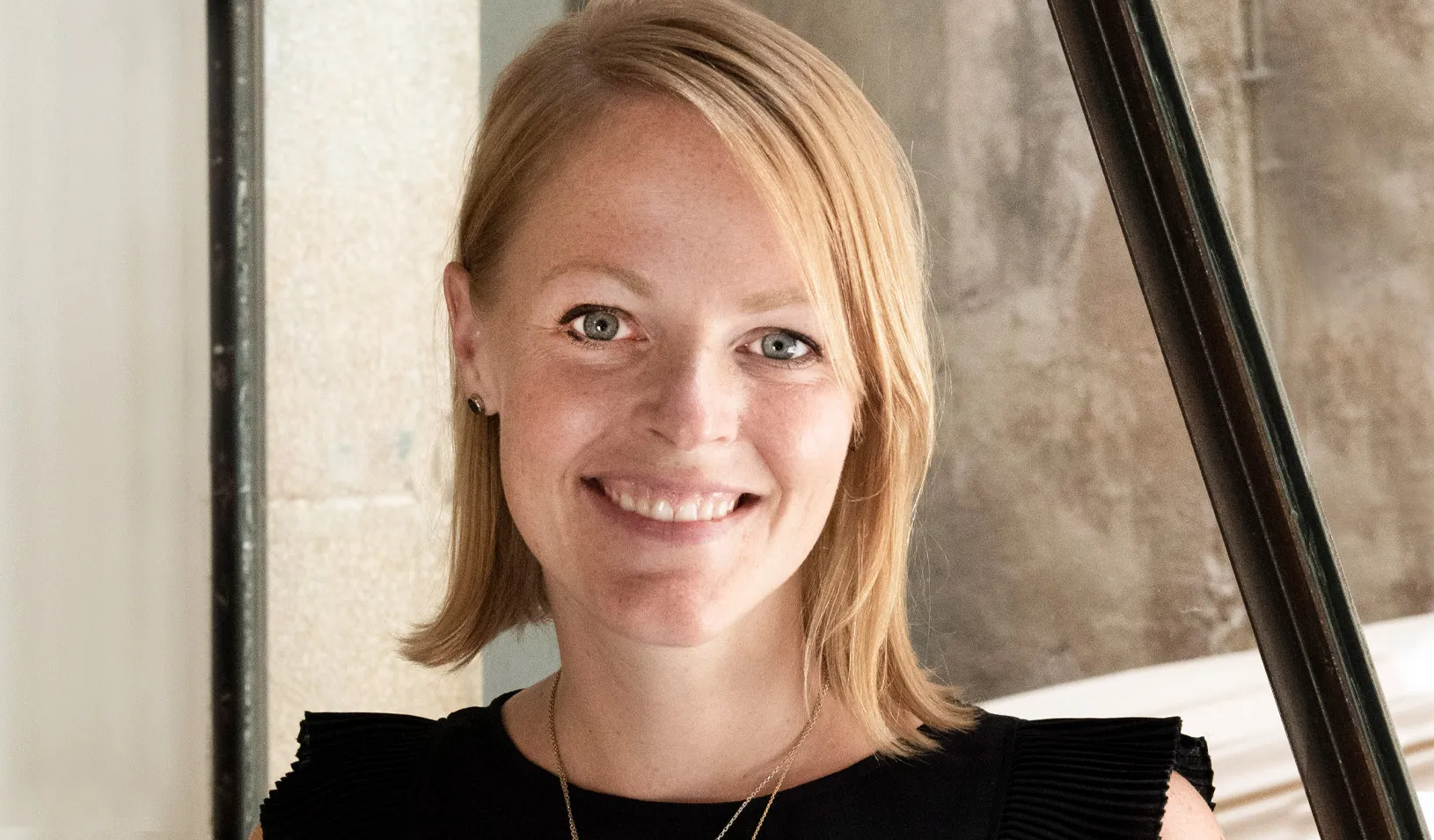Stanford Business School Breaks Ground on New Campus for 21st Century
Environmentally Sustainable Campus Will Be Named Knight Management Center.
September 10, 2008
Stanford GSB formally broke ground on its new business school campus September 10. Designed to fulfill the academic needs of the school’s new MBA curriculum and other programs for the 21st century, the 360,000-square-foot campus will comprise eight buildings around three quadrangles and will be named the Knight Management Center.
“Leading universities of the 21st century need business schools that foster extraordinary intellectual innovation and collaboration,” said Robert L. Joss, the Philip H. Knight Professor and Dean of the Stanford Graduate School of Business. “This new campus provides the physical infrastructure to enable that academic vision to come to life at Stanford.”
Dean Robert Joss (left) and Provost John Etchemendy (right), give Phil Knight, MBA ‘62, a hand putting his shoe print into concrete
Phil Knight Honored
During the groundbreaking ceremony, Nike Inc. founder and chairman Philip H. Knight, MBA ‘62, for whom the new campus is named, pressed his feet—clad, of course, in a pair of black Nike Air Max 360s—into concrete. “It is fitting that the new campus be named for Phil Knight, who is one of the great innovators and entrepreneurs in American business,” said Joss. “He created not just a company but an industry. His generosity, and that of our other alumni, allows the Stanford Graduate School of Business to lead the way and set new standards.”
Knight was an early lead donor with a gift of $105 million — believed to be the largest gift ever to a business school. The campus is expected to cost at least $350 million by completion in 2011. “My hope is that this new campus will enable future generations of students to have the life-changing experience I had at Stanford Business School,” said Knight. “If there was no Stanford Graduate School of Business, there would be no Nike. The idea for a business really never took form until I took that small business management course. It was out of that I had the encouragement and enthusiasm to start Nike.”
The campus will include flexible classroom space and breakout study rooms to accommodate the greater number of smaller classes and programs in the school’s new MBA curriculum, launched in 2007. The design aims to invite and engage more students in cross-disciplinary experiences involving Stanford University’s six other schools of engineering, law, education, earth sciences, medicine, and humanities and sciences. The campus will include a 600-seat lecture hall, dining facilities, a parking structure for 900 vehicles, and dedicated space for career management and executive education programs. It also will offer classrooms for collaborative hands-on learning or virtual communication linking students from other schools at Stanford or around the globe, as well as faculty and staff offices.
“The new campus is going to be sensational,” said Knight. “I appreciated the scope of the whole thing as I watched them tear down the site today.” Leading in Environmental Sustainability The construction of the Knight Management Center campus leverages Stanford President John L. Hennessy’s call for the university to be a force for change on issues of global importance, especially regarding the environment.
“One of the biggest global challenges facing us today is the sustainable use of our planet’s natural resources,” said Hennessy. “The Graduate School of Business will play a key role in helping us address these challenges by leading the way in its sustainable development of this new campus. And in the long term, it is the creation of economic incentives and alignments between business and society that will have the greatest impact in addressing our environmental challenges. I have no doubt that this new campus and the Business School’s new MBA curriculum will enrich the learning of future generations of students who will lead the way in problem solving.”
Built to demonstrate maximum leadership in environmental sustainability, the new campus architecture will blend indoor and outdoor spaces, and utilize solar technology to reduce energy needs. The project aims to:
- Reduce overall water usage by at least 30 percent.
- Exceed current energy efficiency standards by at least 40 percent.
- Recycle or salvage 50 to 75 percent of non-hazardous construction debris.
- Use rainwater or re-circulated gray water to reduce potable water use for building sewage conveyance by 80 percent.
- Use low- or non-volatile organic compound—emitting materials to ensure exceptional indoor air quality.
- Satisfy not only the University’s Guidelines for Sustainable Building, but seek Platinum Certification, the highest level in the U.S. Green Building Council’s LEED rating certification system.
“Living smart means that the building has a social responsibility that can manifest itself in a concern for the future in terms of the resources that are used and the resources that are consumed by the building,” said Principal Architect Stan Boles of BOORA Architects, the Portland, Ore.-based executive architect on the project. “For example, the orientation of the buildings is narrow in the north-south dimension,” said Boles. “They are designed for optimum daylighting, ventilation, and for shading of one another. The exterior walls are designed so that areas of glass are created but shaded by exterior screens to prevent excessive heat gain.”
Building for a New Curriculum
The business school’s new curriculum, introduced in fall 2007, is highly personalized, with more global content and expanded leadership development and student advising. For example, all entering students enroll in a 16-person Critical Analytical Thinking seminar through which they learn to analyze, present and defend a point of view. In the leadership program that is part of a new Strategic Leadership course, students are divided into squads of eight for leadership simulations during which they are videotaped and receive personal coaching and feedback.
Stanford’s small MBA student-body of 750 students, less than half that of other top business schools, and its collaborative culture, makes the high-touch program possible. Architecture The Knight Management Center comprises a series of small buildings situated around “outdoor rooms”— Town Square, Faculty Courtyard, Community Court, Amphitheater, and Academic Walk — which will provide numerous opportunities for teams to collaborate and work. The central Town Square has been designed as a gathering place for students, faculty, and staff — an outdoor workspace or place for community events and leisure.
“A key element of the business school is the very intimate relationship between student and faculty, the small class size,” said Boles. “A lot of emphasis was placed on individuals collaborating with one another, and with their faculty. So, the sense of place will reinforce that small-scale feeling, almost like a village where people are working and studying, and having a sense of community within.” It will incorporate Stanford’s traditional architecture with a contemporary approach.
The Serra Street façade will display Stanford features such as red tile roofs and recessed windows. Welcoming pathways will be incorporated into the campus design to create architectural interest as well as encourage interaction among Stanford faculty and students. Tiered classrooms will have aisles for flexibility, and large windows will allow energy-saving natural light to penetrate.
The Knight campus, now under construction along Serra Street across from the business school’s Schwab Residential Center, will complement the Schwab complex, which was built in 1997 to house MBA students and Executive Education participants. The Knight Management Center will comprise about 100,000 more square feet than the current campus. Business School buildings now in use will be returned to the University for other uses.
BOORA Architects is involved in a number of Stanford University projects including the environmentally sustainable Jerry Yang and Akiko Yamazaki Environment and Energy Building that opened in 2008. Architectural firms William Rawn Associates and Bohlin Cywinski Jackson also contributed to early stage planning and design. Turner Construction, a leading construction firm for higher education and green construction in the United States, is building the campus.
The campus, funded by major gifts and donations in addition to the Knight gift, is expected to open in 2010 and be completed by spring 2011. “To raise so much capital for such a magnificent project is strong testimony to the enthusiasm and innovative spirit of the alumni of the Stanford Graduate School of Business,” said Stanford University Provost John Etchemendy, who opened the groundbreaking ceremony. Stanford University Trustee and Keystone Inc. President Robert M. Bass, MBA ‘74, who served as chair of the Ad Hoc Committee for Graduate School of Business Campus Planning, and Stanford Architect David Lenox have been essential to the project and also presided at the groundbreaking.
For media inquiries, visit the Newsroom.
Explore More
Back to Class: Pathfinder

Business, Government, and Society Forum Looks at New Demands on Leadership

Erin Nixon Joins Stanford GSB as Assistant Dean of Admissions
